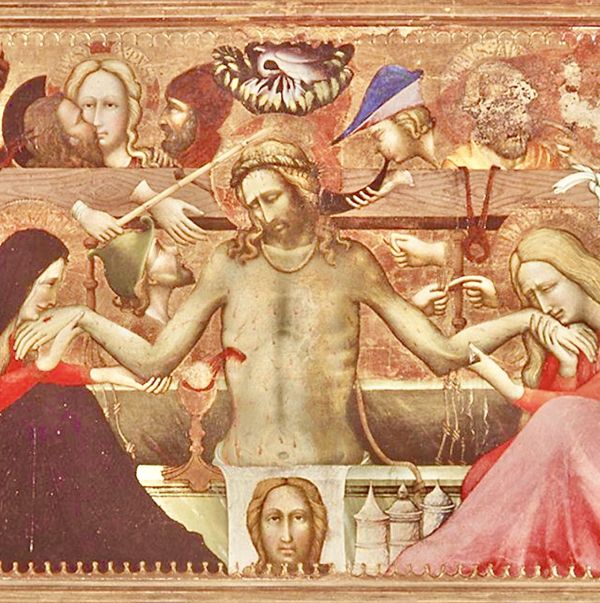«Woman, why are you weeping? Whom do you seek?» (Jn 20:15).
Mary of Magdala wept for her Lord near the tomb. Lost and grieving, she grieved not knowing where he was, until Jesus made himself present.
Clare too, in the enclosure of San Damiano, wept while praying for her Christ, uniting herself to his Passion, while awaiting the Resurrection.
In the Legend we read:
"She had now fixed in the Light the burning gaze of inner desire and, having transcended the sphere of human vicissitudes, she opened wide the field of her spirit to the rain of Grace.
[...] Very often, prostrate in prayer with her face to the ground, she bathed the ground with tears and brushed it with kisses: so that she seemed always to have her Jesus in her arms, whose feet she bathed with tears, on whom she pressed kisses" (FF 3197).
Clare inwardly sought the Lord, even for those who did not desire Him.
She was careful not to hold back Christ who was ascending to the Father, living the announcement of the Resurrection with a face of light, testifying to the present vision of Him to the brothers and sisters who approached her.
He lived the perennial earthly Exodus in view of the Promised Land, which he already savoured in small doses.
Francis, for his part, jester of the Resurrection, mourned the Passion of Love, corroborated by existential rebirth.
Again, in St Bonaventure's Major Legend:
"To those who saw him, he seemed a man from another world: one who, his mind and face always turned to heaven, strove to draw all upwards" (FF 1072).
Just as Mary of Magdala made the transition from outside (near the tomb) to inside her own soul - to recognise the Risen Jesus.
So Francis, after living on the outside, among cheerful Assisian brigades, had encountered the "Rabbuni" within his heart. Recognising and deciphering the Master of his life, in prayer before the Crucifix of San Damiano.
There finding God, he found himself again; in the midst of weeping and perfect joy.
Jesus also asked him the question: «Why are you weeping? Whom do you seek?» (Jn 20:15).
The Damianite Crucifix became the place of his resurrection, where the tears of a missed life, spent in solace, gave way to the Calling by name, in view of a personal and communitarian regeneration.
At Saint Damian, when a divine Voice came to him from the Crucifix inviting him to change his life, the Poor Man uttered this prayer
"Rapture, I pray thee, O Lord,
the burning and sweet power of your love
my mind from all things that are under heaven,
that I might die for love of thy love,
As thou hast deigned to die
for love of my love" (FF 277).
Octave of Easter Tuesday (Jn 20:11-18)












